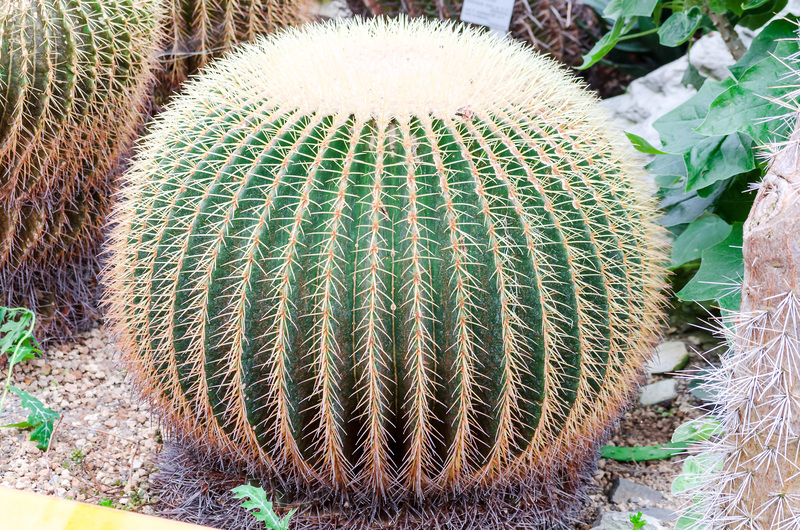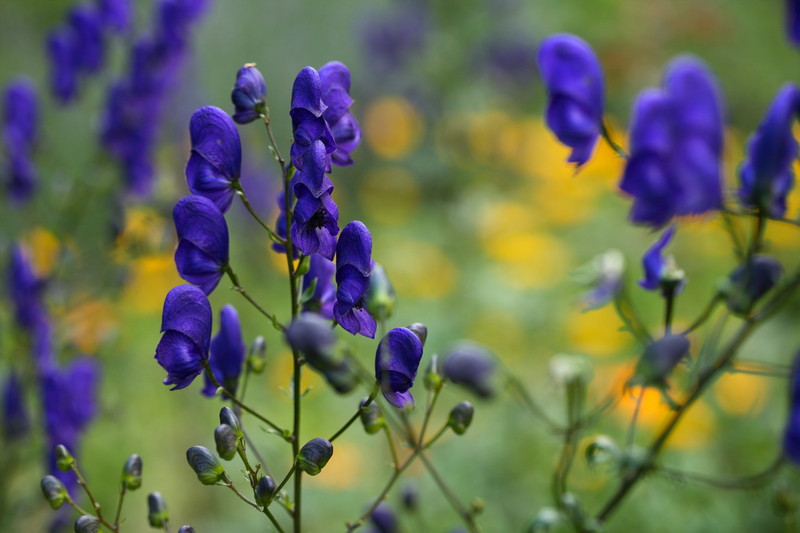How to Design a Garden that Nurtures and Protects Little Ones
Posted on 16/06/2025
How to Design a Garden that Nurtures and Protects Little Ones
Creating a safe and stimulating outdoor space for children is a dream for many families. Not only does a well-designed garden promote healthy development, curiosity, and a love of nature, but it also ensures that your little ones are secure as they explore the wonders outside. How do you design a child-friendly garden that both nurtures young minds and protects their growing bodies? Read on for a comprehensive, SEO-optimized guide to creating that magical, safe haven right in your backyard.
Why Create a Child-Centric Garden?
- Fosters appreciation for nature
- Encourages outdoor play and physical activity
- Supports emotional, cognitive, and social development
- Provides a natural classroom for learning
Designing a garden for children is about more than just safety. It's an opportunity to nurture curiosity, spark imagination, and promote lifelong healthy habits. By incorporating play elements, sensory experiences, and natural beauty, your family garden becomes a haven where childhood memories are made.

Planning the Perfect Child-Safe and Nurturing Garden
Step 1: Assess Your Garden Space
Begin by walking around your existing garden. Note the layout, possible hazards, sunlight exposure, and potential play areas.
- Identify sunny and shady spots for play and planting
- Check for existing dangers like ponds, large drops, thorny bushes, or toxic plants
- Think about visibility -- you'll want to be able to supervise kids easily
Step 2: Set Your Priorities
Ask yourself: What's most important for your family? Do you want a space for imaginative play, vegetable gardening, wildlife watching, or all of these?
- Balance play with learning by mixing activity areas with quiet observation zones
- Age-appropriate features: Plan different areas for toddlers, preschoolers, and older kids
Essential Elements for a Safe and Nurturing Children's Garden
1. Safety First: Hazard-Free Garden Design
Protecting your child's wellbeing is the top priority when designing any garden for little ones. Here are essential safety tips:
- Fencing: Secure the perimeter with child-safe fencing at least 1.2 meters (4 feet) high.
- Gate Locks: Install self-closing, lockable gates.
- Pond and Water Safety: Either avoid open water or securely fence around ponds and water features. Raised water tables with lockable lids can substitute for open ponds.
- Avoid Toxic Plants: Many common garden plants can be harmful if ingested. Research and remove plants like foxglove, lily of the valley, oleander, and certain mushrooms.
- Soft Surfacing: Use grass, rubber mulch, or play bark in play zones to cushion falls and prevent scrapes.
- Shed and Tool Storage: Keep garden chemicals and tools locked away and out of reach.
2. Age-Appropriate Garden Features
Each age group has different needs and abilities. Designing child-friendly gardens needs to take this into account:
-
Toddlers:
- Flat open lawns for running and rolling
- Low raised beds for easy planting and digging
- Sensory paths made from different textures
-
Preschoolers:
- Sandpits, mud kitchens, swing sets, and small slides
- Bug hotels and butterfly-friendly flowers
- Water play tables (with safety covers)
-
Older Kids:
- Treehouses, climbing walls, and zip-lines (with safety measures)
- Veggie patches and wildlife pond observation decks
- Quiet reading nooks and art spaces
3. Encouraging Curiosity and Learning
Learning gardens for children can spark passion for the environment and science. Consider adding:
- Mini vegetable gardens: Grow easy crops like peas, beans, carrots, and strawberries
- Herb spirals or sensory beds: Feature touchable, scented, and edible plants such as mint, chives, basil, or lavender
- Compost bins: Teach about recycling, nature's cycles, and eco-friendly practices
- Bug hotels and bird feeders: Invite wildlife and promote observation and responsibility
Smart Plant Choices for a Child's Garden
Selecting Safe and Stimulating Plants
The best children's garden plants are non-toxic, non-thorny, and offer sensory interest.
- Edible picks: Strawberries, blueberries, raspberries, cherry tomatoes, peas, and beans
- Fragrant and touchable: Lamb's ear, mint, lavender, lemon balm
- Colorful flowers: Sunflowers, nasturtiums, marigolds, calendula, cosmos
- Movement and structure: Grasses, bamboo (in pots), and small sunflowers
Tip: Teach children about plant safety, and always supervise toddlers to prevent them from tasting unknown plants.
Plants to Avoid for Little Ones
- Foxglove
- Lily of the valley
- Oleander
- Angel's trumpet
- Daffodils (bulbs are toxic)
- Deadly nightshade (belladonna)
When in doubt, check with a local nursery or child safety organization about the plants in your area.
Designing Spaces for Play and Exploration
Dedicated Play Zones
A garden for kids should cater to active play. Create child-safe zones for:
- Sand play and mud pits
- Swings, seesaws, and climbing frames (ensure safe surfacing beneath)
- Imaginative forts, hideouts, and teepees
Keep play zones visible from the house or main seating area for easy supervision.
Paths and Trails
Meandering paths invite adventure. Use smooth, non-slip materials, and add stepping stones, logs, or shells for interest. Mark some secret trails with sunflower "tunnels" or bean teepees for a magical touch.
Quiet Corners and Hideaways
Every child needs a place to take a breath. Provide a shady bench, a beanbag under a tree, or a living willow den for quiet time, reading, or calming moments in nature.
Adding Sensory Experiences to the Garden
Stimulate the Five Senses
The most memorable child-friendly backyard gardens are rich in sensory stimulation. Consider zones that delight:
- Touch: Fuzzy lamb's ear, rough bark, smooth pebbles, soft grass
- Smell: Scented herbs, flowers like jasmine and sweet peas
- Sight: Bold flower colors, mirrored gazing balls, bug houses
- Sound: Wind chimes, rustling grasses, water features
- Taste: Edible berries, sugar snap peas, apple trees
Enhancing Safety with Smart Garden Design
Safe Materials and Construction
- Fences: Make sure there are no gaps or sharp points
- Pathways: Use level, nonslip materials
- Raised beds and edging: Rounded, smooth edges are best
- Play equipment: Install according to manufacturer's guidelines, on soft ground, and check regularly for wear and tear
- Shade: Plant trees, install canopies, or use sail shades to protect against sunburn and heatstroke
Ongoing Maintenance for Safety
- Regularly inspect fences, gates, and play equipment
- Keep pathways clear of debris, moss, and trip hazards
- Monitor for overgrown shrubs or new plant growth that could present risks
- Supervise young children at all times outside
Encouraging Family Involvement and Independence
Let Your Child Help Create the Garden
Your little ones will be more likely to cherish and care for a garden they helped build. Involve them in:
- Choosing seeds and plants (from a pre-approved list of safe options)
- Designing pathways or decorating stepping stones
- Building bug hotels or paint signs for each plant
- Harvesting vegetables and flowers
This not only boosts their confidence but helps teach responsibility and appreciation for the environment.
Eco-Friendly Features for Modern Children's Gardens
Today's children are tomorrow's green leaders. Incorporate sustainable practices into your nurturing garden:
- Native plants: Support local wildlife and require less maintenance
- Rainwater collection: Use barrels to demonstrate water conservation
- Composting: Let kids add garden and kitchen scraps to the bin
- Solar lights: Illuminate garden paths safely after dark
Wildlife-Friendly Touches
A wildlife-friendly garden teaches respect for all creatures. Add:
- Pollinator-attracting flowers for bees and butterflies
- Log piles, bug hotels, and bird boxes for small creatures
- Mud patches for birds and puddles for butterflies

Summary: Growing Up Safely in the Garden
Designing a garden that nurtures and protects children is an immensely rewarding process. Focus on safe, age-appropriate spaces, inspiring sensory experiences, and eco-friendly practices. From soft lawns and colorful flowers to secret hideouts and vegetable beds, your garden will become a cherished space for play, learning, and family connection.
- Plan carefully and remove hazards
- Provide spaces for movement, creativity, and rest
- Opt for safe, interesting plants and natural materials
- Involve children in every step for maximum engagement
With thoughtful planning, a child-safe garden can be both a sanctuary and a springboard for a lifetime of curiosity, health, and joy.
Frequently Asked Questions
What are the best plants for a safe children's garden?
Choose non-toxic, easy-to-grow options: strawberries, sunflowers, marigolds, lavender, mint, snap peas, and kale are favorites for kids' gardens. Always cross-check plant safety with local guidelines.
How can I make my backyard safer for children?
Install secure fencing, use soft play surfaces, remove or fence off water hazards, and eliminate poisonous or spiky plants. Check all garden areas regularly and always supervise young children.
How do I encourage my kids to spend more time in the garden?
Give them their own small plots, plant sensory or edible crops, add play equipment, create art spaces, and encourage wildlife observation. Involve them in planning, planting, and harvesting.
Can a small garden still be child-friendly?
Absolutely! Use multi-purpose raised beds, container gardening, vertical planters, and wall-mounted bug hotels or chalkboards. Small lawns, sand trays, and miniature wind chimes also maximize sensory fun in limited spaces.
Want more tips on creating a nurturing, protective garden for your little ones? Stay tuned to our blog for expert advice on family gardens, outdoor play ideas, and sustainable landscaping for children!



